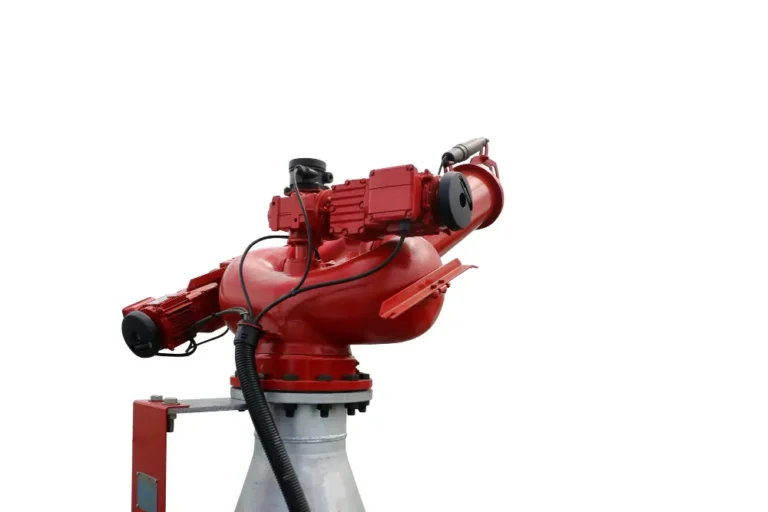The Role of Robotics in Firefighting Operations
In recent years, firefighting technology in India has taken a major leap forward — and leading this innovation are robotics and automation. What was once the domain of brave firefighters battling flames manually has now evolved into a world where robots and AI-driven systems assist in saving lives, reducing property loss, and making rescue missions safer and faster.
As cities grow denser and industrial facilities become more complex, robotic firefighting systems are becoming a game-changer. They can go where humans can’t — inside chemical plants, tunnels, nuclear facilities, or high-rise buildings engulfed in flames.
This article explores how robotics is transforming firefighting operations, how it connects with modern fire suppression systems and fire detection system technologies, and why it’s essential for India’s growing safety ecosystem.
1. From Manual to Machine: The Shift in Firefighting
Traditional firefighting methods rely heavily on manpower, physical effort, and risky decision-making. Firefighters often face extreme heat, toxic gases, and collapsing structures. Despite advanced gear and training, these dangers remain.
That’s where robotics steps in — not to replace firefighters but to empower them. Firefighting robots can handle high-risk situations with precision, operating in hazardous environments without fatigue or fear.
These robots are equipped with:
- Thermal imaging cameras to detect hotspots.
- Infrared sensors and AI navigation for smoke-filled environments.
- Remote-control systems that allow human operators to control them from a safe distance.
By combining fire detection systems with robotic intelligence, response times improve drastically — and fires can be contained before they spread.
Firefighting robots come in several forms, each serving a unique purpose. Let’s look at the most common types used globally — and increasingly in India’s fire safety sector.
a. Ground-Based Robots
These are heavy-duty machines, often tank-like in appearance, equipped with water cannons or foam sprayers. They can move across rough terrain and approach fire sources that are too dangerous for humans.
b. Aerial Drones
Aerial drones are transforming the way firefighters assess emergencies. They can quickly scan large areas, transmit live video, and identify heat signatures using thermal sensors. These drones work seamlessly with fire detection systems, helping teams strategize efficiently.
c. Amphibious Robots
Some fires occur near ports, oil rigs, or coastal areas. Amphibious robots can operate both on land and in water, offering flexible fire suppression options where traditional trucks cannot reach.
d. Search-and-Rescue Robots
These robots are designed for locating trapped individuals in collapsed buildings or smoky environments. They can navigate tight spaces and send real-time visuals to rescue teams.
Also read: Easy Upgrades to Improve Fire Safety in Your Building.

3. Integration with Fire Suppression Systems
Modern firefighting robots don’t operate in isolation. They are often integrated with smart fire suppression systems, allowing a synchronized approach to fire control.
For example:
- A fire detection system can identify a fire source and immediately send coordinates to a robot.
- The robot can then activate an onboard fire suppression system (like foam, water mist, or dry chemical agents) to control the blaze.
- This rapid, automated chain of action reduces fire damage and prevents escalation.
In industrial facilities, data collected by these robots also helps improve safety audits and identify recurring fire hazards — a crucial step in prevention and compliance with Indian fire safety standards.
4. The Indian Context: Robotics in Fire Safety
India’s urban infrastructure and industrial growth have brought immense challenges in fire safety management. Major cities like Mumbai, Delhi, and Bengaluru have witnessed frequent fire incidents in factories, hospitals, and commercial complexes.
Recognizing these risks, India is gradually adopting robotic technology in firefighting operations. For example:
- Defence Research and Development Organisation (DRDO) has developed fire detection and suppression robots for military and industrial use.
- Indian Fire Services in states like Gujarat and Maharashtra are testing robotic firefighting vehicles capable of navigating hazardous environments.
- Tech startups are collaborating with international safety equipment manufacturers to develop AI-based fire detection systems and autonomous suppression robots tailored for Indian conditions.
These innovations align perfectly with the vision of “Smart Cities” — where safety, technology, and sustainability go hand-in-hand.
5. Environmental Impact and Safety Benefits
Fire incidents not only destroy infrastructure but also cause significant environmental damage — releasing toxic gases, particulate matter, and greenhouse emissions.
Robotic systems help reduce this impact in several ways:
- Early detection using automated systems ensures fires are controlled faster, limiting pollution.
- Precision suppression means less water and chemical use, conserving resources.
- Remote operation prevents human injury and loss of life.
By integrating eco-friendly fire suppression systems, India can take a sustainable step forward in firefighting operations — protecting both people and the planet.
6. The Future of Firefighting: AI, IoT, and Robotics
The future of firefighting is not just about machines but about smart ecosystems. Imagine a scenario where:
- Sensors in a building detect rising temperatures.
- An AI-driven fire detection system alerts the control center.
- A firefighting robot automatically navigates to the source, supported by drone surveillance.
This real-time, connected network powered by Internet of Things (IoT) and Artificial Intelligence (AI) ensures that fires are addressed faster and smarter than ever before.
In the coming years, India is expected to see:
- AI-driven predictive maintenance for firefighting equipment.
- Autonomous fire trucks guided by real-time data.
- 5G-enabled communication between human teams and robotic units.
These advancements will redefine the efficiency and reliability of firefighting operations nationwide.
7. Challenges Ahead
While robotics brings countless benefits, implementation in India still faces challenges:
- High cost of robotic units limits their use to large-scale industries or government agencies.
- Training and technical expertise are still evolving among local firefighting teams.
- Maintenance and repair require specialized knowledge and infrastructure.
However, as awareness and adoption increase, costs are expected to drop, making robotic firefighting more accessible across municipalities and private sectors.
Also read: What is building security and why is it important
Conclusion
Firefighting will always be a heroic profession. But now, that heroism is supported by technology. Robotics adds precision, safety, and intelligence to traditional firefighting methods, helping teams act faster and more efficiently.
For a country like India, where rapid urbanization and industrial growth bring complex fire risks, embracing robotics in firefighting operations is no longer optional — it’s essential.
As we move toward smarter cities and safer communities, platforms like FSIE – Fire & Security India Expo continue to highlight these emerging technologies, bridging the gap between innovation and real-world safety solutions.
If you’d like to learn more or explore collaboration opportunities in this field, reach out to the experts at FSIE Contact Page and be part of India’s fire safety revolution.
